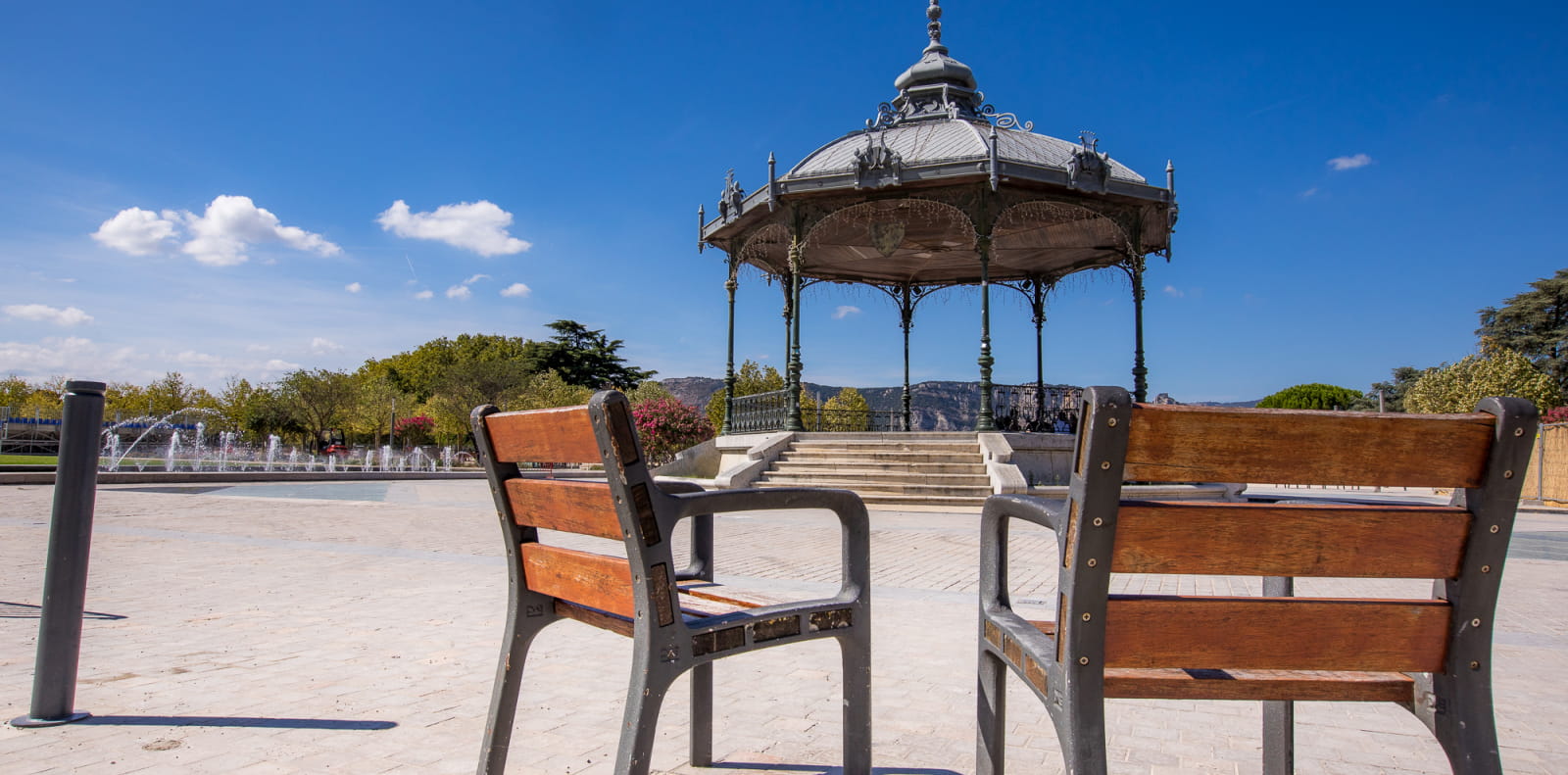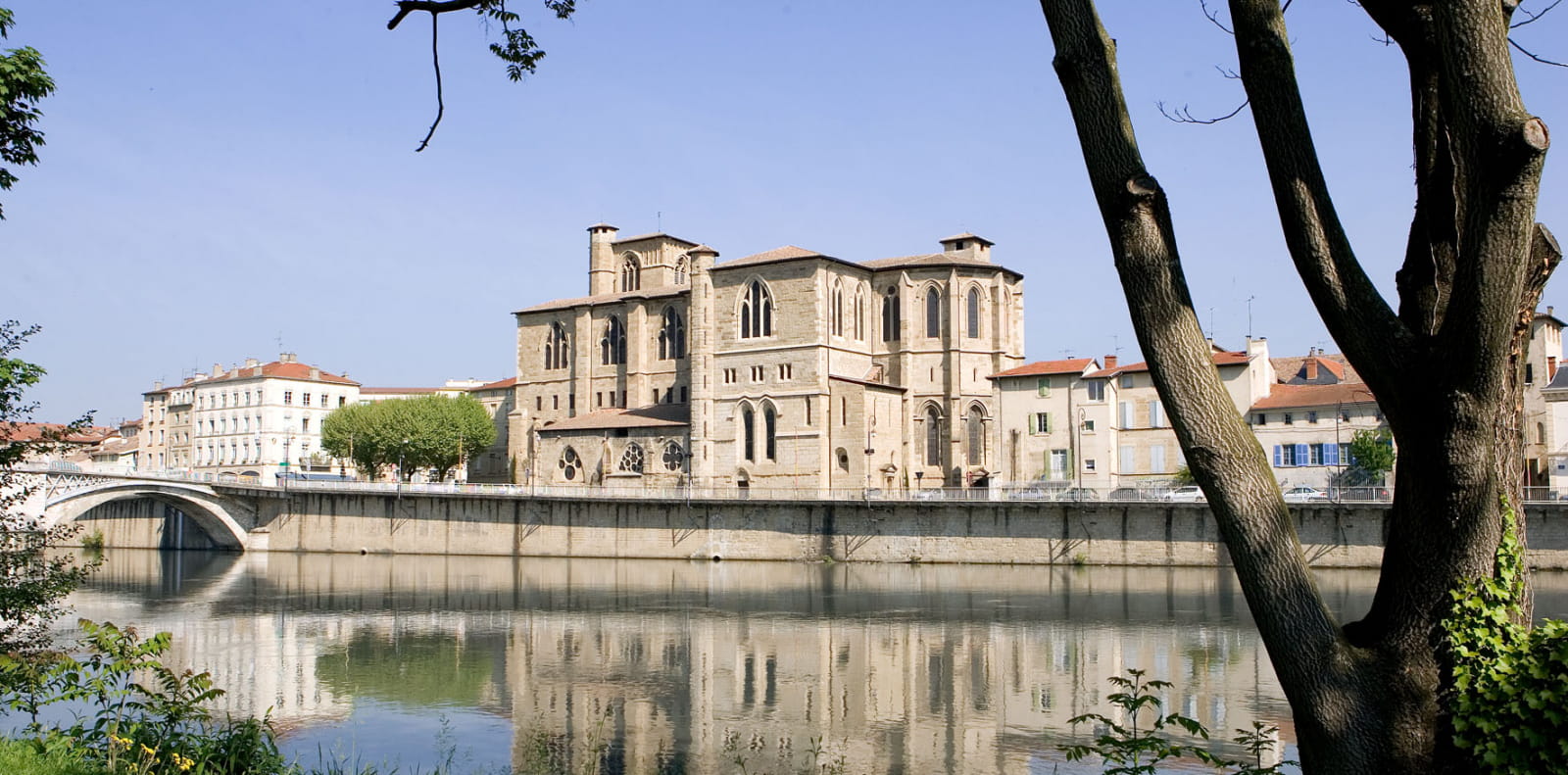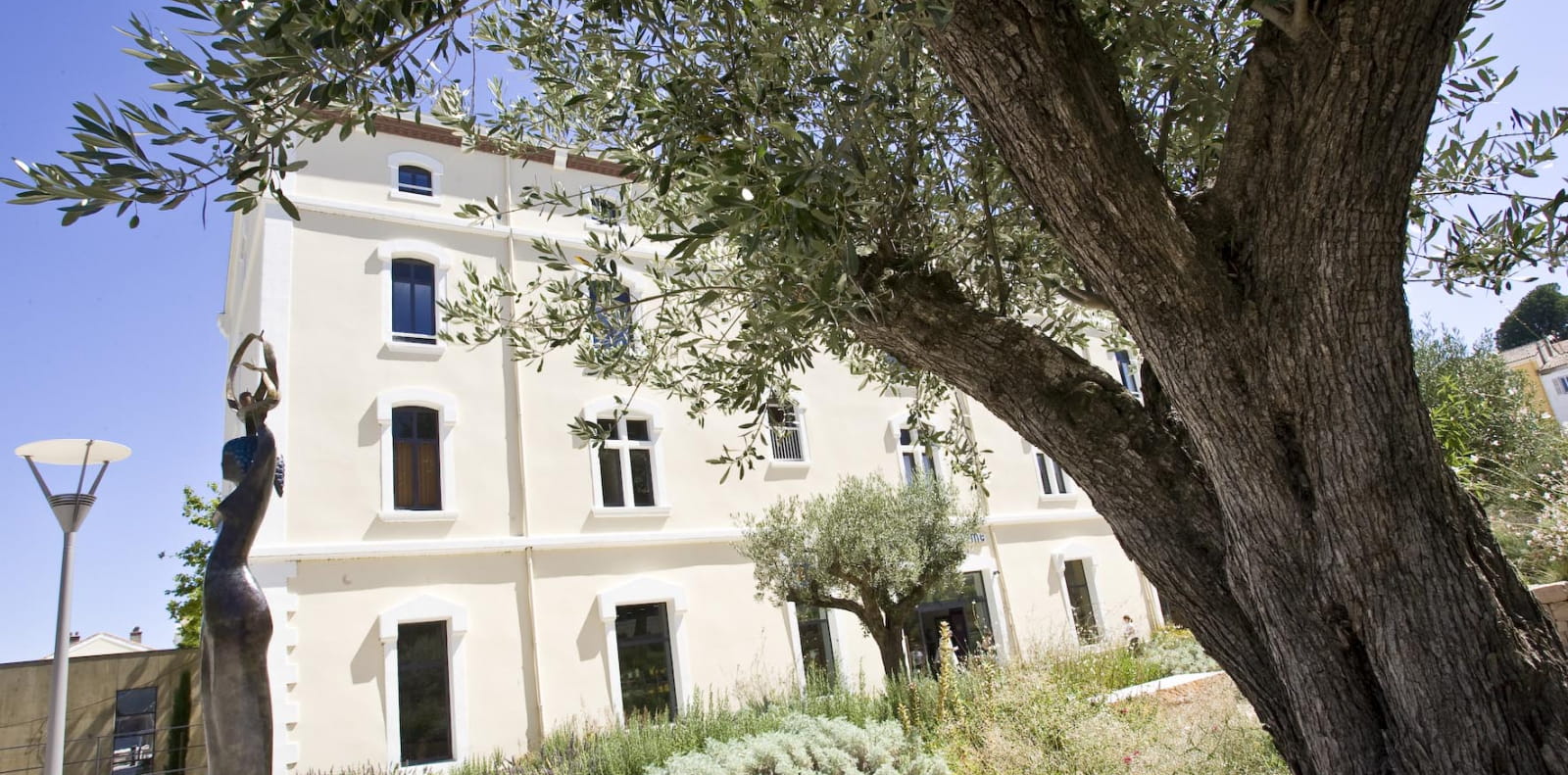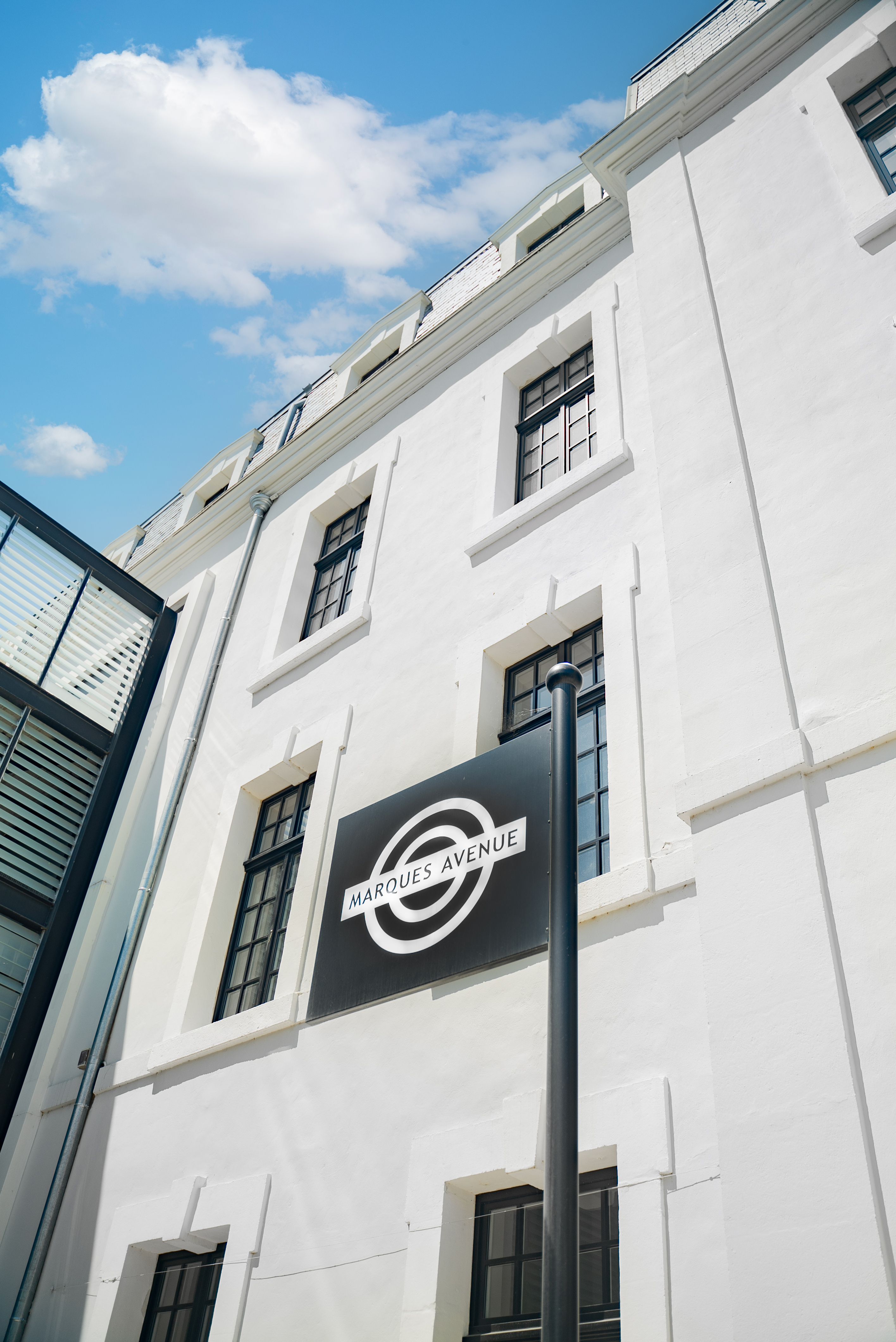Towns
Valence, Romans, Montélimar : 3 towns to discover !

Valence and the Kiosque Peynet
The old city, with its pedestrianised shopping centre, its shady squares and welcoming terraces, its attractive buildings with its pastel colours, has retained its old world charm in the centre of a city which is resolutely turned towards the future. As you ramble through the city which cries out « art and history », you will discover the Cathédrale St-Apollinaire, the oldest monument in the city. Close by you will find the statues and mouldings which cover the facade of the Maison des Têtes and the astonishing Maison Mauresque (a symbol of 19th century enthusiasm for things oriental). Valence also boasts its Musée d’Art et d’Archéologie (which has just been extended and refurbished), a little theatre ‘à l’italienne’ and the Centre du Patrimoine Arménien (one Valence inhabitant in every ten is of Armenian origin).
Eight parks account for 10% of the city’s surface area – the largest being the Parc Jouvet with its 7 hectares of grass and mature trees from all over the world. This park is much loved by families and university students (over 10,000 in number). Hard by, the Champ de Mars contains the famous Kiosque Peynet (Monument Historique) immortalised on ‘papier glacé’ (a glossy paper), one evening in 1942, by the celebrated illustrator. Valence is criss-crossed by 17 kilometres of open canals, a place for family strolls and trout fishing.
If you like good food, you will no doubt visit the premises of Anne-Sophie Pic***, the only woman to hold three Michelin stars, who is brilliantly following in her father’s footsteps. To the Maison Pic we can now add two new signs, which hang above the establishments of the chefs, Isichi Masachi* of La Cachette and Baptiste Poinot* of Restaurant Flaveurs.
Don’t leave without tasting ‘le Suisse’, the speciality of the city and featuring ‘pâte sablée’ (shortbread) and orange peel. The Maison Nivon will explain to you the history of the delicacy, whose traditional recipe goes back to 1852.

Romans, collégiale Saint Barnard
This footwear International centre attracts visitors with its Musée de la Chaussure housed in the former couvent de la Visitation,and many factory outlets.
At the ‘Musée de la chaussure‘, housed in an amazing building now sensitively converted, you can admire the creations of the greatest shoe makers. This is a unique place where over 13,000 items are conserved in collections.
At Romans, the factory shops of the luxury shoe trade cater for a larger and ever more knowledgeable clientele. Allow yourself to drift into the heart of the old town : collégiale St-Barnard, Rue de l’Armillerie, l’escalier Josaphat, la place aux Herbes, le calvaire des Récollets. Musical productions in the old town are all part of the charm of August. Musical thursdays, Place de l’Horloge, feature free concerts. On these occasions there is a warm and festive mood beneath the Jacquemart.

Montélimar
Mythical stop of the Nationale 7 and the A7 motorway, on the way to the holidays, Montelimar has always been the’ Porte du Soleil’ and the capital of the nougat.
With its Allées Provençales where you can pass the time of day on a terrace, the nougat capital draws in the tourist. Walk the pedestrianised area of the old town: Maison Diane de Poitiers, Hôtel du Puy Montbrun, Hôtel de Chabrillan, Collégiale Ste Croix, Porte Saint t Martin. The Château des Adhémar, nucleus of the old town, provides the setting each year for exhibitions of renown. At Saint Martin, a newly created and refurbished space, Montélimar now completely boasts a very contemporary look. In this new quarter, symbol of the quality of life in Drôme

























